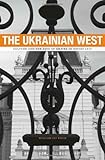Support H-Net | Buy Books Here | Help Support the NBN and NBN en Español on Patreon | Visit New Books Network en Español!
- African Studies
- African American Studies
- American Politics
- American Studies
- American South
- American West
- Asian American Studies
- Australian and New Zealand Studies
- British Studies
- Canadian Studies
- Caribbean Studies
- Central Asian Studies
- Chinese Studies
- East Asian Studies
- Eastern European Studies
- European Politics
- French Studies
- German Studies
- Iberian Studies
- India Studies
- Indian Ocean World
- Iranian Studies
- Irish Studies
- Israel Studies
- Italian Studies
- Japanese Studies
- Korean Studies
- Latino Studies
- Latin American Studies
- Mexican Studies
- Middle Eastern Studies
- Native American Studies
- Pacific Studies
- Polish Studies
- Russian and Eurasian Studies
- Southeast Asian Studies
- South Asian Studies
- Turkish Studies
- Ukrainian Studies
- Western European Studies
- World Affairs
- Animal Studies
- Anthropology
- Archaeology
- Business, Management, and Marketing
- Media
- Critical Theory
- Disability Studies
- Drugs, Addiction and Recovery
- Education
- Economics
- Finance
- Geography
- Gender Studies
- Genocide Studies
- Higher Education
- Human Rights
- Journalism
- Language
- Law
- LGBTQ+ Studies
- National Security
- Philanthropy
- Philosophy
- Policing, Incarceration, and Reform
- Political Science
- Politics & Polemics
- Public Policy
- Sex, Sexuality, and Sex Work
- Sociology
- Sound Studies
- Sports
- Urban Studies
- Big Ideas
- Celebration Studies
- Co-Authored
- Cover Story
- Historical Materialism
- History Ex Silo
- Interpretive Political and Social Science
- Invested Investor
- Landscape Architecture
- Late Antiquity
- Mormonism
- NBN Book of the Day
- NBN Seminar
- Postscript: Conversations on Politics and Political Science
- Practical History
- Preparing for Life After Grad School
- Psychology and Climate Change
- Syriac Studies
- The Chair: In The Room at the Fed
- New Books with Miranda Melcher

Oct 25, 2011
Bloodlands
Europe between Hitler and Stalin
Summary
Neville Chamberlain described Czechoslovakia as a far away land we know little about. He could have said it about any of the countries of east-central Europe. Yet, for the Soviet Union and Nazi Germany east-central Europe, was of prime importance in ways that would have horrible consequences for the people who made it their home, especially in the territories of Poland, Ukraine, Belarus, the Baltics and western Russia. Timothy Snyder calls these areas "the Bloodlands," and with good reason. In Bloodlands: Europe Between Hitler and Stalin (Basic Books, 2010) he explores how two regimes with quite different perspectives ended up perpetrating mass murder on an unprecedented level in that region.
Comparisons of Stalinism and Nazism are hardly new, but Snyder's book is not a classical comparative study. Rather, it is an attempt to understand how the leaders of the USSR and Nazi Germany thought about the future of the region, and why their visions--despite being very different--both necessitated mass murder. The resulting insights lead to new understanding of both the Great Terror and the Holocaust.






































































































